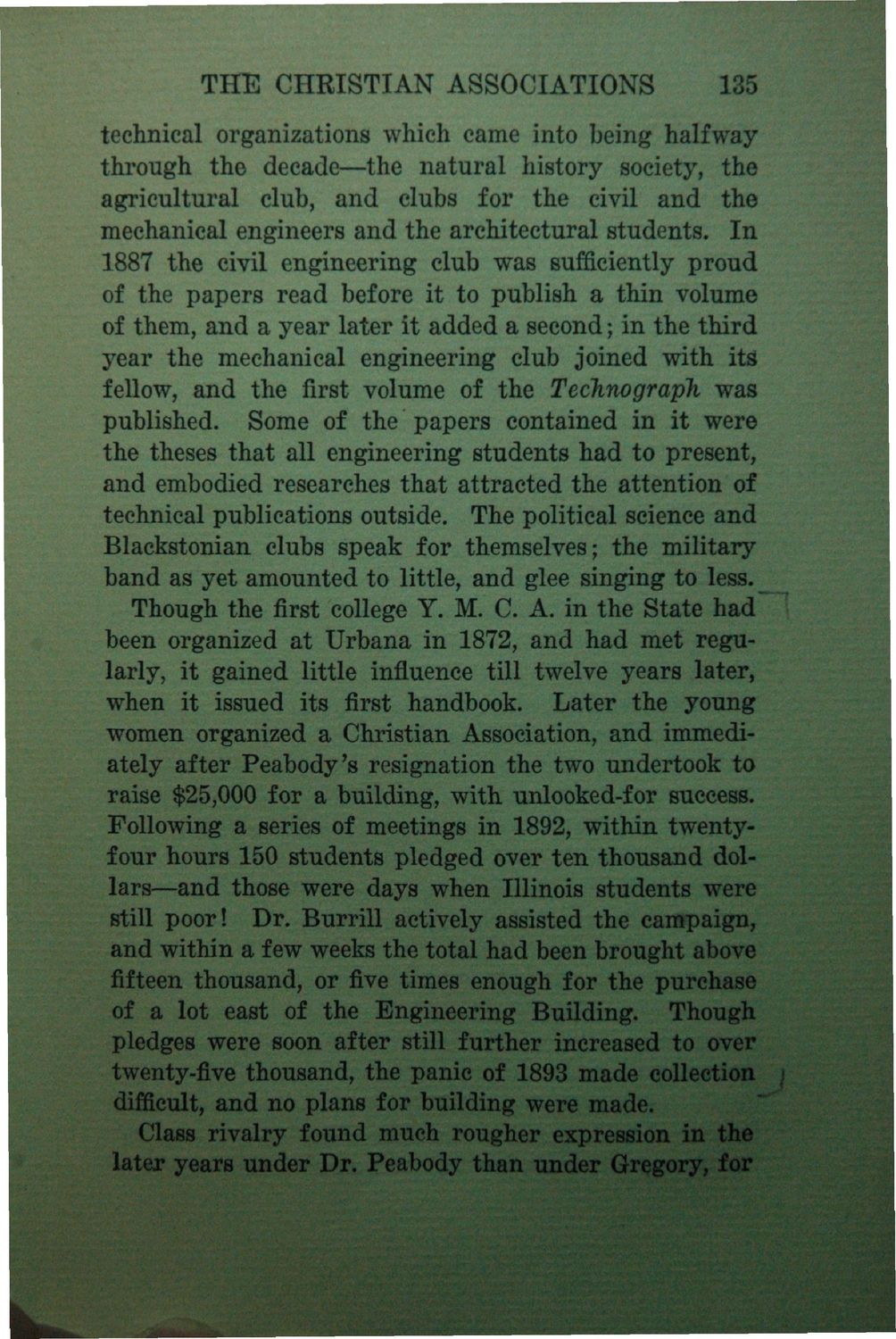| |
| |
Caption: Book - History of the University (Nevins)
This is a reduced-resolution page image for fast online browsing.

EXTRACTED TEXT FROM PAGE:
THE CHRISTIAN ASSOCIATIONS 135 technical organizations which came into being halfway through the decade—the natural history society, the agricultural club, and clubs for the civil and the mechanical engineers and the architectural students. In 1887 the civil engineering club was sufficiently proud of the papers read before it to publish a thin volume of them, and a year later it added a second; in the third year the mechanical engineering club joined with its fellow, and the first volume of the Technograph was published. Some of the papers contained in it were the theses that all engineering students had to present, and embodied researches that attracted the attention of technical publications outside. The political science and Blackstonian clubs speak for themselves; the military band as yet amounted to little, and glee singing to less. Though the first college Y. M. C. A. in the State had been organized at Urbana in 1872, and had met regularly, it gained little influence till twelve years later, when it issued its first handbook. Later the young women organized a Christian Association, and immediately after Peabody's resignation the two undertook to raise $25,000 for a building, with unlooked-for success. Following a series of meetings in 1892, within twentyfour hours 150 students pledged over ten thousand dollars—and those were days when Illinois students were still poor! Dr. Burrill actively assisted the campaign, and within a few weeks the total had been brought above fifteen thousand, or five times enough for the purchase of a lot east of the Engineering Building. Though pledges were soon after still further increased to over twenty-five thousand, the panic of 1893 made collection difficult, and no plans for building were made. Class rivalry found much rougher expression in the later years under Dr. Peabody than under Gregory, for
| |